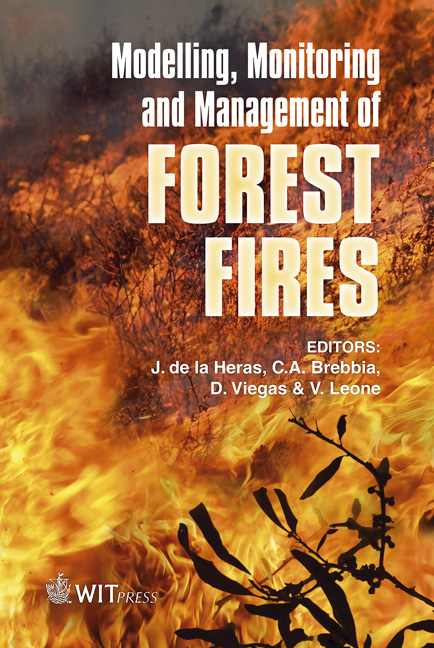Assessing Fire Risk In Stand-level Management In Galicia (north-western Spain)
Price
Free (open access)
Transaction
Volume
119
Pages
9
Page Range
89 - 97
Published
2008
Size
342 kb
Paper DOI
10.2495/FIVA080101
Copyright
WIT Press
Author(s)
M. Pasalodos-Tato & T. Pukkala
Abstract
Forest fires are the most important threat that forest plantations have to face in Galicia. Due to both economic and ecological losses that fire cause in the region, fire risk must be integrated in forest management planning. Nevertheless, the complexity of forest fires and the dependence of their consequences on many uncontrollable factors (i.e., wind speed, fuel moisture, flame intensity, etc), makes it difficult to predict these consequences. Fire risk is the probability of occurrence multiplied by the proportion of damaged timber. The aim of this study is to analyse the effect of fire risk on the optimal management schedule of Pinus radiata stands under two different ways of assessing risk: endogenous and exogenous approach, both with and without timber depreciation. The results show that optimal rotation length shortens with increasing fire risk if there is timber depreciation. Without timber depreciation the trend is similar except for very high values of exogenous salvage rate and endogenous salvage; in these situations, rotation length increases when fire risk increases. Keywords: optimisation, simulation, endogenous risk, exogenous risk, soil expectation value, salvage, timber depreciation. 1 Introduction Fire can be considered the main hazard for forest stands in Galicia. More than half of the forest fires that took place in Spain in the last decade occurred in Galicia. (Ministerio de Medio Ambiente [1]). Among the reasons that can explain this high proportion of forest fires are the high fuel loads due to management that maximises biomass production. This kind of management is a consequence of high demand for disintegration wood in the region. The current management practise involves production of large amount of forest residues
Keywords
optimisation, simulation, endogenous risk, exogenous risk, soil expectation value, salvage, timber depreciation.





